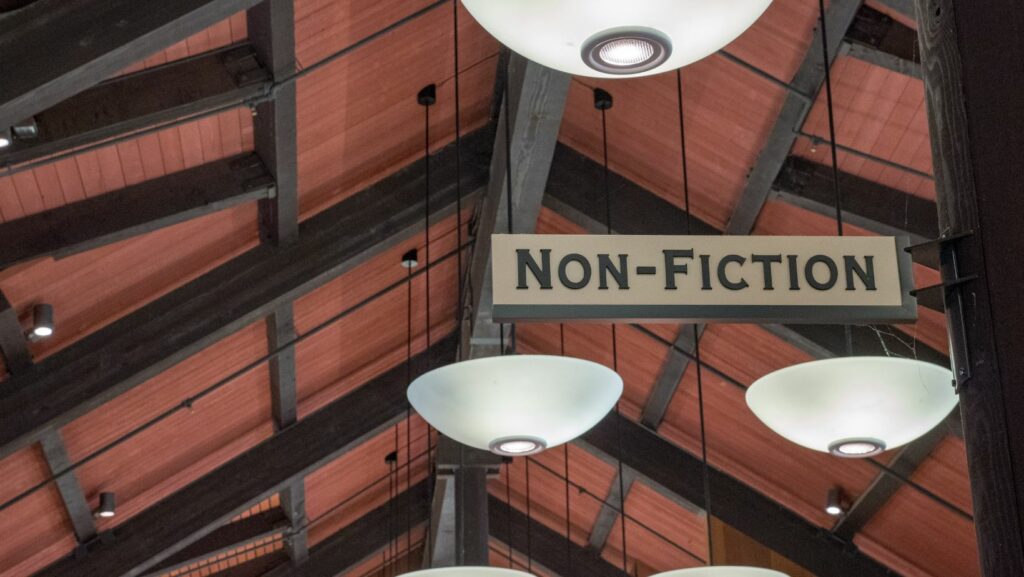Creative nonfiction stories blend the factual with the imaginative, offering readers a compelling narrative that’s both informative and entertaining. Unlike traditional nonfiction, which sticks strictly to the facts, creative nonfiction allows writers to use literary techniques to bring real-life events and experiences to life.
This genre appeals to those who crave authenticity but also appreciate the art of storytelling. In recent years, creative nonfiction has gained popularity as readers seek more engaging ways to connect with true stories. From memoirs and personal essays to travelogues and narrative journalism, these stories provide a window into the human experience, making them relatable and thought-provoking. Writers in this genre skillfully weave together elements of fiction and nonfiction, ensuring their narratives resonate on a deeper level.
By exploring creative nonfiction, readers can enjoy the best of both worlds: the truth of factual writing and the allure of a well-told tale. This genre continues to captivate audiences, offering endless possibilities for exploration and discovery.
Creative Nonfiction Stories
 Creative nonfiction stories blend factual content with narrative techniques to engage readers. They offer a fresh perspective on reality through compelling storytelling. Creative nonfiction encompasses a variety of formats, including memoirs, essays, and narrative journalism.
Creative nonfiction stories blend factual content with narrative techniques to engage readers. They offer a fresh perspective on reality through compelling storytelling. Creative nonfiction encompasses a variety of formats, including memoirs, essays, and narrative journalism.
It draws from real-life events, anchored in facts, yet employs literary devices such as imagery and dialogue. Authors craft scenes, develop characters, and establish a narrative arc to create an immersive experience. Unlike traditional nonfiction, this genre prioritizes a narrative flow that captivates the reader while remaining grounded in truth. Truth remains the cornerstone of creative nonfiction. Accurate representation of facts distinguishes it from fiction. This genre demands honesty from writers, requiring them to balance narrative flair with factual integrity.
Readers trust the authenticity of the content; thus, authors must diligently verify information before adding artistic elements. A commitment to truth ensures the story resonates while adhering to the ethical standards expected in nonfiction.
Popular Forms of Creative Nonfiction
Popular forms of creative nonfiction combine factual rigor with narrative creativity. These forms provide depth and insight into the human experience. Personal essays express individual experiences through a combination of reflection and storytelling. Writers use personal narrative and self-exploration, often addressing universal themes like identity and belonging.
human experience. Personal essays express individual experiences through a combination of reflection and storytelling. Writers use personal narrative and self-exploration, often addressing universal themes like identity and belonging.
These essays blend factual detail with creativity, drawing readers into personal and often transformative journeys. Memoirs focus on the writer’s personal life, capturing specific periods or experiences. They prioritize emotional truth alongside factual accuracy, engaging readers with a mix of authenticity and narrative skill. Authors delve into defining moments, offering introspection while maintaining a chronological or thematic structure.
Literary journalism combines in-depth reporting with literary techniques. It immerses readers in real-life events, using narrative structures and descriptive detail. Journalists employ scene-building and character development, providing a compelling and nuanced portrayal of their subjects while maintaining factual accuracy.
Crafting a Compelling Creative Nonfiction Story
 Creative nonfiction stands as a testament to the power of truth told with artistry. It bridges the gap between factual reporting and imaginative storytelling, engaging readers with narratives that resonate on a deeply personal level. Whether through memoirs, essays, or literary journalism, this genre invites exploration into the human condition, offering fresh perspectives and emotional depth.
Creative nonfiction stands as a testament to the power of truth told with artistry. It bridges the gap between factual reporting and imaginative storytelling, engaging readers with narratives that resonate on a deeply personal level. Whether through memoirs, essays, or literary journalism, this genre invites exploration into the human condition, offering fresh perspectives and emotional depth.
Writers venturing into creative nonfiction must balance narrative creativity with factual accuracy, ensuring their stories remain authentic and ethically sound. The genre’s versatility allows for a wide array of storytelling techniques, making it a fertile ground for innovation and expression. As readers continue to seek stories that both inform and inspire, creative nonfiction offers a compelling avenue for writers to connect with audiences.
By embracing the genre’s unique blend of truth and creativity, storytellers can craft narratives that not only captivate but also leave a lasting impact. Memoirs focus on the writer’s personal life, capturing specific periods or experiences. They prioritize emotional truth alongside factual accuracy, engaging readers with a mix of authenticity and narrative skill.



